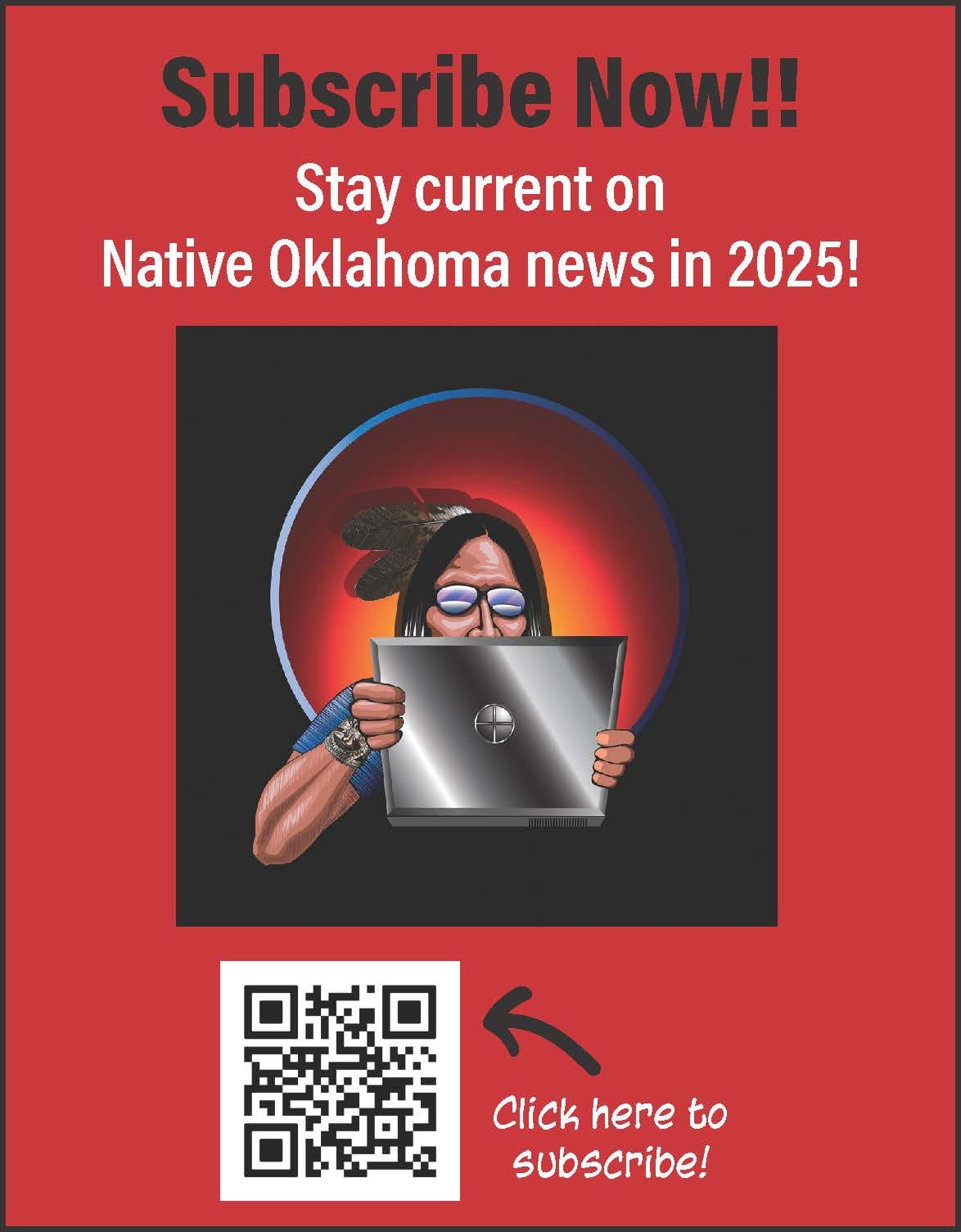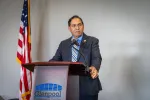

What the ‘Big Beautiful Bill’ means for Indian Country and the Osage Nation
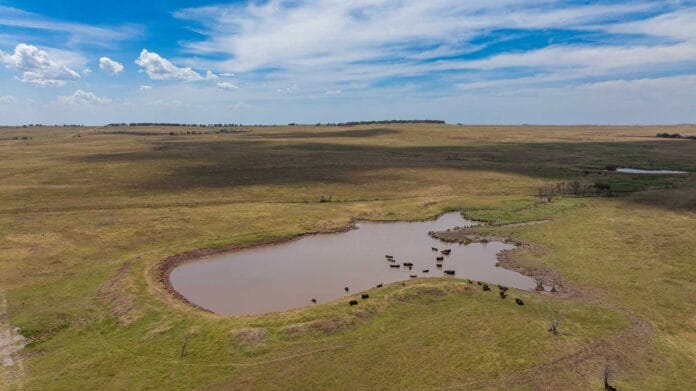
Health care remains protected, but the sweeping federal cuts will have impacts on energy, education, and housing programs
by Allison Herrera, Osage News
President Trump signed the One Big Beautiful Bill Act (HR1) into law on July 4. It’s a sweeping domestic policy bill that focuses on tax cuts and supercharging the administration’s border enforcement to prevent undocumented people from settling in the United States. It also makes major cuts to Medicaid and the Supplemental Nutrition Assistance Program (SNAP).
The Act only needed a simple majority vote to pass. The Republicans passed the Act through Congress by just a few votes. No Democrats voted for the Act and a few Republicans voted against the Act. All of Oklahoma’s congressional delegation voted for the bill.
So, what do these sweeping changes mean for Indian Country and Osage citizens?
The key provisions include tribal exemptions from SNAP and Medicaid work requirements, funding for tribal governments, and parity for tribal citizens in adoption tax credits.
According to the National Indian Health Board, “Medicaid work requirements without an AI/AN (American Indian/Alaskan Native) exemption would likely cause many AI/ANs to lose coverage and would place additional strain on the Indian health system resource.”
But the bill also cuts tribal energy loan guarantees, threatens tribal clean energy projects, and claws back $2 billion for forestry protection.
It’s unclear if the Osage Nation has projects that are affected by the cuts to clean energy. The bill eliminates energy grants and loan programs used by tribal nations to obtain energy sovereignty, bolster economic development and protect their tribal lands.
National Congress of American Indian President Mark Macarro said the bill’s effects on tribal communities will be mixed.
He highlighted NCAI’s efforts, including multiple visits to Capitol Hill, meetings with allies in Indian Country at the congressional level, and the formation of the Coalition for Tribal Sovereignty, to influence the bill’s outcomes.
Before NCAI members could lobby to protect tribal nations from some of the cuts wielded by the Department of Government Efficiency, or DOGE, they were trying to combat some of the harmful effects of executive orders.
“Nowhere along the lines … is there anything beautiful about this bill,” Macarro said.
First, there was a pause on all federal aid from the Office of Management and Budget, which was rescinded. In early February, tribal nations grappled with large-scale staffing reductions at agencies like the Bureau of Indian Affairs and the Indian Health Service.
“I think for some time, and I’m not sure it’s ended, but Indians were being lumped in with minority groups, and so a big part of our push … was to differentiate tribal citizens, tribal nations on the basis of being a political designation, not a race based designation, therefore not DEI,” Macarro said, referring to the administration’s push to rid federal government agencies of diversity, equity and inclusion programs.
Macarro told Osage News that a key message he and others echoed when talking to congressional leaders is that health care is a trust responsibility the federal government owes tribal nations.
Two positive provisions for tribal citizens are the Tribal Adoption Tax Parity Act and the Low Income Housing Tax Credits (LIHTCs).
When a non-tribal family living in a state adopts a new family member, they’re able to claim that individual on their taxes. Tribes, tribal citizens, have not been able to do that until the passage of HR 1, which will create that provision for tribes.
Low-Income Housing Tax Credits were permanently extended. These are not specific to tribal nations, but they have used them to attract people and companies willing to develop affordable housing in Indian Country.
The bill essentially enshrines President Trump’s 2017 tax cuts, which, according to the Ways and Means Committee, say “Permanence of the 2017 Trump tax cuts will save 6 million jobs, including 1.1 million manufacturing jobs.” However, reporting on HR 1 paints a starker financial picture, one where the national debt soars to $3.4 trillion. That’s according to the Congressional Budget Office. It will also result in more than 10 million people without access to health insurance over a decade.
Wahzhazhe Health Center CEO Mark Rogers told Osage News in an email that the cuts to Medicaid will take place over a 10-year period, that Native Americans are exempt from the work requirements and that rates for Indian Country for Medicaid have not been cut. Medicaid rates are the rates doctors and others are paid for providing care
“I think only time is going to tell how this is going to ultimately shake out,” Rogers said.
He and his team at the Osage Nation Health System (ONHS) have been doing some calculating and preparation in case any new cuts are proposed. They are, however, waiting on those rates, which will drop in December. If there is a drop in how much Medicaid will pay, that can have consequences on how they and other tribal health care systems are able to meet their financial obligations.
Rogers said the people he is talking to in the industry think tribal communities won’t be affected. But he said the proof will be in the fee schedule that Medicaid releases at the end of the year. Rogers said tribal nations that compact their health systems get an enhanced rate, and he’s worried that could be reduced, despite assurances.
“We are continually monitoring to fully understand the actual impacts of these changes; however, despite the broader uncertainty, there’s genuine reason for optimism as Indian Country appears better positioned than initially feared,” Rogers said.
However, once the Wahzhazhe Health Center expands its services to non-Natives, they will be impacted.
“While Medicaid eligibility for AI/AN individuals is preserved, eligibility tightening and new verification requirements may reduce the number of non-Native patients who qualify or remain enrolled in Medicaid as a result, impacting all tribes who provide care for Non-Natives,” he said.
He remains optimistic that the impacts to self-governance tribes like the Osage Nation won’t be impacted.
“Mandatory funding for the Indian Health Service (MYFA or Compacted Health Funds), and funds authorized under Title V Self-Governance Compacts and Title I Self-Determination Contracts remain intact and protected,” Rogers said.
This means that funding for 638 and compact tribes, like the Osage Nation, should remain stable in the near term.
Tribal Green Energy Programs
On the Osage Nation, Eighth Generation Consulting has been working on a few projects that involve workforce training in the field of renewable energy, as well as a collaboration with the ON housing department and the Department of Natural Resources (DNR). Some of the grants they’ve applied for have been paused.
Osage citizen Saxon Metzger, one of the CEO’s of Eighth Generation, recently moved his company from Chicago to Pawhuska. He said that it’s not only economic headwinds from HR1 that companies like his are facing, but the uncertainty around the ever-changing tariff policies of the Trump administration. He said that green energy projects take time to bring up to scale and need stability in policy and market decisions.
“Businesses need stability to make hiring decisions,” Metzger said.
“They need stability to make investment decisions and most of the changes that we’re seeing right now have not really supported that.” He said a lot of the HR1 Bill has thrown into question some of the grant programs.
Another partnership that has been held up is one with Pawhuska Public Schools and the Chamber of Commerce for workforce development and “future-proof sustainability careers.”
Other negative consequences for Indian Country, according to Skenadore and Wilson, a tribal law and policy group:
Student Loan Changes will Impact some Native Students
- The Act establishes a $200,000 loan limit and gives less flexibility on loan repayment. It gives less flexibility for students who experience financial hardship. The law also only allows full-time students to be eligible for Pell Grants.
Program Recessions that will occur include:
- Tribal Energy Loan Program funds will be rescinded, and the program will end.
- The National Education and Obesity Prevention Grant Program, otherwise known as SNAP-ED, will end in 2025.
- The State and Private Forestry Conservation Program, which included Tribes and provided $1.5 billion for tree planting and related activities, has been rescinded.
Native American Housing Assistance and Self-Determination Act (NAHSDA)
According to Macarro, there was a provision in the House of Representatives’ version of the HR1 bill that NAHSDA had to be designated in areas difficult to develop for low-income housing tax credits for tribally sponsored projects or buildings. That was removed.
“So that was going to be seen as something that was, you know, positive for a number of reasons, ultimately providing needed housing, wherever that is, but also development spurring tribal economies, local economies,” Macarro said.
“Really, if somebody understood where the progression of Indian Country and how things have been improving and working, that would have been something definitely to keep.”
Macarro remains optimistic for Indian Country despite some of the earlier frustrations. He is hopeful that some of the cuts proposed in the so-called “skinny budget” that affect the Bureau of Indian Affairs, Indian Health Service and most notably, tribal colleges will be negotiated down or out.
“I get that, and I understand, you know, every presidential administration has its prerogatives, has its priorities,” he said.
“This, this has been an outlier in terms of the experience of that, though, and so what was, what was the precedent for dealing with these things hasn’t been allowed to take place,” Macarro said. “And that’s what’s been frustrating.”

ICYMI: Muscogee Supreme Court: Freedmen are entitled to citizenship
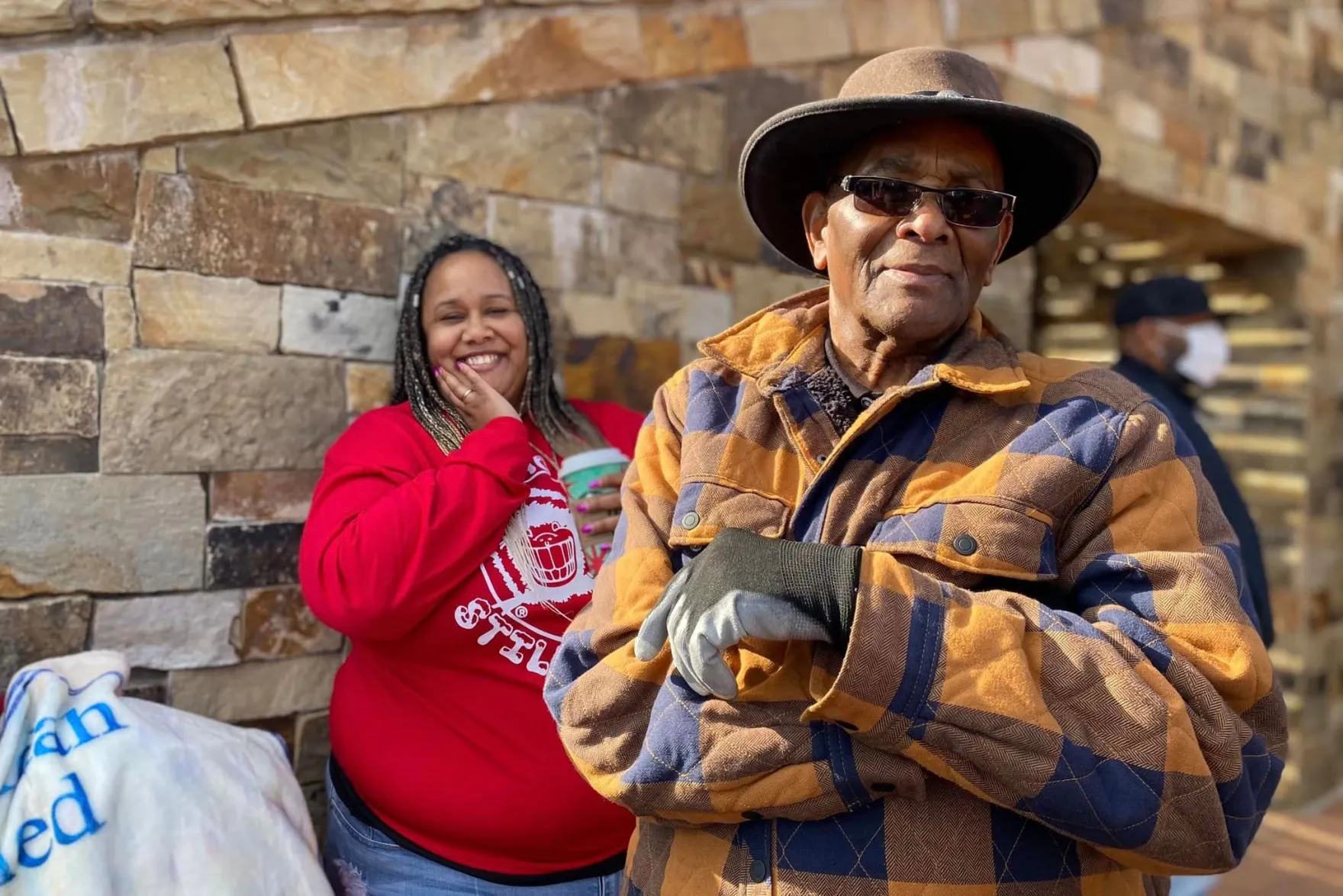
The Muscogee Nation Supreme Court affirmed that individuals who are descendants of formerly enslaved people under the tribe are legal citizens.
By Katie Hallum (ᏧᏟ), KOSU
The ruling comes after Muscogee Freedmen have repeatedly fought for tribal recognition in and out of court alongside descendants from the Chickasaw, Choctaw and Seminole Nations.
The court ruled the tribe’s “by-blood,” language for citizenship requirements, the basis for denial of Freedmen applications, was unlawful under the 1866 treaty, which granted Freedmen citizenship status, and ruled the citizenship board must act accordingly.
“The matter is remanded to the Appellant, Citizenship Board, who is directed to apply the Treaty of 1866 and issue citizenship to the Respondents, and any other future applicant who is able to establish a lineal descendant on the Creek By Blood Dawes Roll, or the Creek Freedmen Dawes,” the ruling said.
The case was originally heard in September by a Muscogee district court judge, who ruled in favor of Freedmen descendants Rhonda Grayson and Jeff Kennedy. The pair were initially denied citizenship in 2019.
The tribe appealed the decision, throwing the case into the hands of the Muscogee Creek Supreme Court.
The Muscogee Creek Indian Freedmen Band took to social media to celebrate.
“After 46 years of disenfranchisement, we can finally reclaim our birthright as citizens of the Muscogee Creek Nation and honor our ancestors,” the statement said. “All descendants of the Creek Freedmen can now claim their birthright. We pray the ancestors are proud!”
A spokesperson for the tribe said the tribe may request to go back to court.
“We are currently reviewing the order to understand its basis as well as its implications for our processes. It may be necessary to ask for a reconsideration of this order to receive clarity so that we can ensure that we move forward in a legal, constitutional manner.”
The tribe would become the second to grant citizenship to its Freedmen after the Cherokee Nation did so in 2017.
A vision realized: NSU Oklahoma College of Optometry opens doors on nearly $40M milestone facility
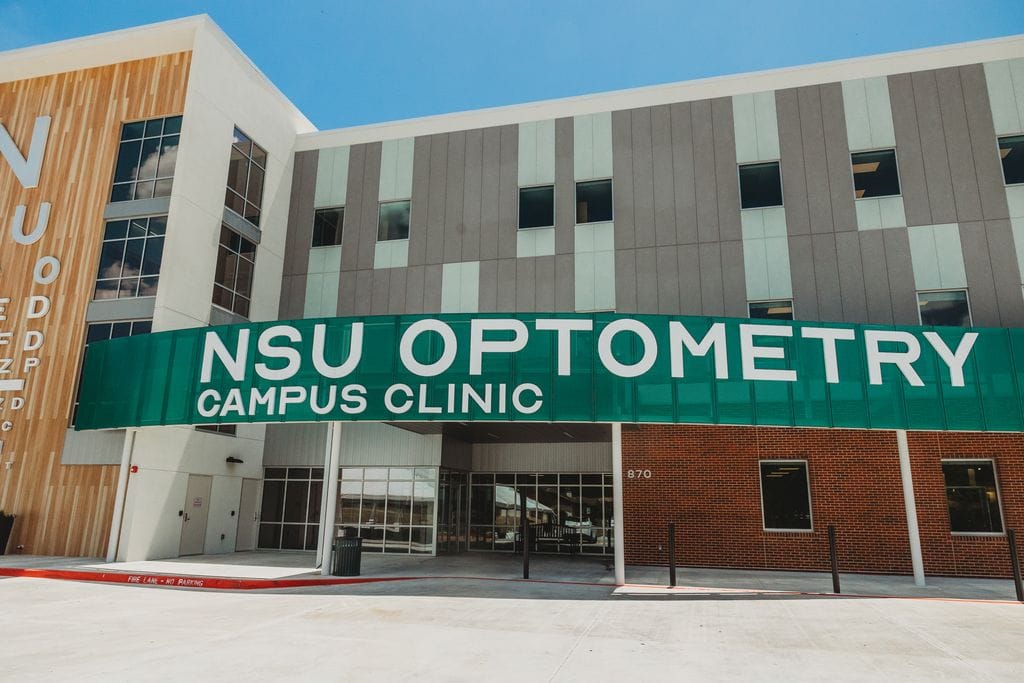
TAHLEQUAH, Okla. – On July 29, Northeastern State University leaders, tribal dignitaries, city and county leadership, state legislators, donors, students and community members gathered to celebrate a vision—in every sense of the word.
Hundreds braved the morning heat to witness a defining moment in health care education: the official ribbon cutting and grand opening of NSU’s new 78,000-square-foot, nearly $40 million Oklahoma College of Optometry facility. Attendees toured the space, which speakers described as not just a building, but a bold step forward in delivering life-changing vision care and world-class training for the next generation of optometric professionals.
“This new facility that we celebrate is not the finish line—it's a starting point,” NSU President Rodney Hanley said. “It is a launching pad for new research, stronger partnerships and more care delivered to communities across Oklahoma and beyond.”
President Hanley was joined by Cherokee Nation Principal Chief Chuck Hoskin Jr., who emphasized the power of collaboration in turning the vision into reality.
“The $5 million dollar investment Cherokee Nation contributed to NSU’s new College of Optometry is one of the most impactful contributions we’ve ever made in health care education,” Chief Hoskin said. “It supports hundreds of future optometrists and gives them hands-on training experience through the Cherokee Nation Health Services, where more than 40,000 annual patient encounters transpire. The continued collaboration between Cherokee Nation and NSU ensures that critical eye care will be delivered to our citizens, strengthening our mission to improve health and wellness for Cherokee families.”
Founded in 1979, the NSU Oklahoma College of Optometry has graduated nearly 1,110 optometrists across 43 classes. Today, 81% of practicing optometrists in Oklahoma are NSUOCO alumni. This year alone, students, residents and faculty are projected to exceed 45,000 patient encounters across NSUOCO’s 11 clinic locations—including producing more than 20,000 pairs of eyeglasses for patients, many of them Cherokee citizens.
“NSUOCO is truly a special place,” Dr. Nate Lighthizer, dean of the College of Optometry, said. “With expanded space and cutting-edge technology, we’re not only increasing access—we’re introducing new services, including a refractive surgery clinic, more contact lens and primary care clinics, and a new aesthetics clinic. This building reflects our deep commitment to growing and serving the people of Oklahoma.”
NSUOCO is one of just 25 optometry colleges in the U.S., and the only one with a formal tribal affiliation and specific focus on serving Native and rural populations. The new facility will support six additional clinics this fall and is expected to accommodate up to 2,500 more patients annually.
Speakers throughout the morning included past and present university presidents and deans, the Tahlequah Mayor, tribal, state and higher education leaders, students and philanthropic supporters—individuals united by a shared commitment to NSU, its communities and its impact statewide.
Their message was clear: when vision and commitment align, great things happen.
July 29 marked the beginning of that next chapter—for vision care, for education and for lives changed far beyond Tahlequah.
For more information about NSUOCO, visit optometry.nsuok.edu.
Bedré commemorates 25 years with sweet celebration
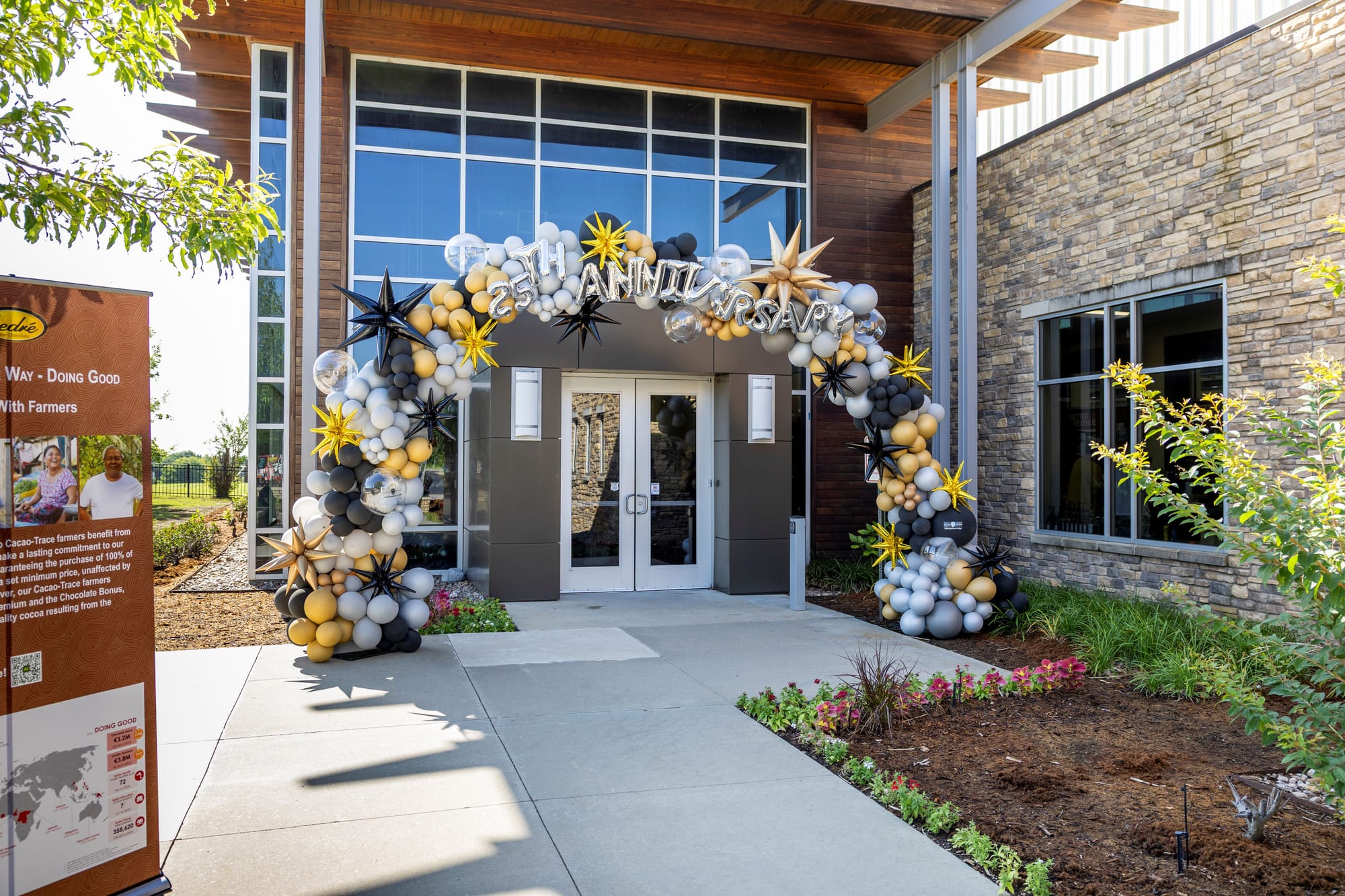
DAVIS, Okla. – Bedré Fine Chocolate commemorated its 25th anniversary with a special celebration June 16, offering guests a glimpse of the chocolate making process and an opportunity to indulge in delectable treats.
Purchased by the Chickasaw Nation in 2000, Bedré Fine Chocolate blends ancient tradition with modern flavor to produce world-class premium gourmet chocolates. Bedré, a Norwegian word meaning “better,” has continued to expand its line as well as its production facility in the past quarter century.
Guests gleaned a better understanding of the origin of the key ingredient in Bedré’s signature chocolates, the cocoa bean, through “From Bean to Bar,” an educational experience detailing the sustainable methods used in Bedré’s cocoa farming.
Utilizing the Cacao Trace sustainable cocoa program, an organization dedicated to building a sustainable future for the cocoa chain and everyone involved, Bedré delivers the highest quality chocolate, from cocoa bean to chocolate bar. The chocolate is the result of sustainable farming methods, expertly processed cocoa beans and the highest manufacturing standards.
“It’s a very good sustainability program,” Bedré General Manager Kay Colbert said. “Because we know that when we are buying the chocolate it is also contributing back to the communities where these farmers live, to their families and the farms where they grow the cocoa beans.”
The Cacao Trace program helps build vital community institutions such as hospitals, water supplies and schools.
Bedré was established in the late 1980s on the outskirts of Ada, on the former Homer Elementary School property. In 2000, under the leadership of Chickasaw Nation Governor Bill Anoatubby, the Chickasaw Nation purchased the company as part of an initiative to diversify business interests and promote tourism.
Bedré relocated to a larger facility in Pauls Valley in 2003. The current state-of-the-art 34,600-square-foot production facility and retail store, situated along I-35 near Davis, opened in 2013, creating a one-of-a-kind attraction in Chickasaw Country. It is located adjacent to the Chickasaw Welcome Center.
To commemorate the silver anniversary, guests were given a special 25th anniversary candy bar made of white chocolate and Oklahoma native pecans. The sweet treat was also given to guests at the McSwain Theatre in Ada, Oklahoma, during a June screening of “Willy Wonka & the Chocolate Factory,” as an homage to Bedré’s Ada beginnings.
During the June 16 event, baristas from Oklahoma City’s Not Your Average Joe Coffee served complimentary refreshments featuring Bedre’s Oka’ Losa’ line of specialty coffees.
The coffee line is just one addition in recent years to Bedré’s product line; milk and dark chocolate covered gummi bears are another. Meltaways in 16 flavors, chocolate-covered twists and potato chips, caramel pecan sensations, and peppermint bark remain fan favorites. Dark chocolate premium sauce and melting wafers create opportunities for endless recipes. The milk chocolate cowboy boot, cowboy hat and Oklahoma-shaped chocolates are popular choices among Bedré customers.
Bedré is a member of the “Made in Oklahoma” coalition, which assists companies in promoting agricultural products that are grown, produced or manufactured in Oklahoma, and was recently ranked in the top 10 best chocolate shops in USA Today’s 10Best reader poll. Readers voted Bedré Fine Chocolate No. 6 in the United States.
Bedré Fine Chocolate is conveniently located on the southwest corner of I-35 at Exit 55 at 37 N. Colbert Road in Davis. Hours are Monday-Sunday, 10 a.m. to 4:30 p.m.
Visit BedreChocolates.com for more information or call (800) 367-5390.
